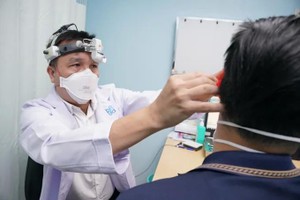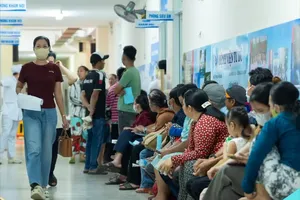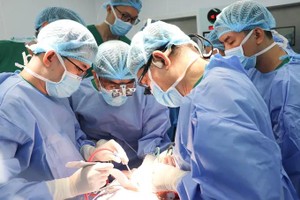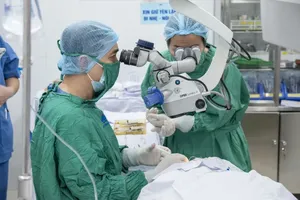
According to Dr. Nguyen Ba Thang, Head of the Center for Neuroscience at the University of Medicine and Pharmacy Hospital in Ho Chi Minh City, a stroke is a brain disease resulting from damage to the brain's blood vessels. Local cerebral ischemia (cerebral blood vessel occlusion) accounts for 85 percent of cases, while cerebral hemorrhage and subarachnoid hemorrhage (cerebral blood vessel rupture) account for 15 percent. Recent advances in emergency intervention techniques for strokes caused by local cerebral ischemia have shown very positive results.
Typically, the method of recanalizing blood vessels with intravenous thrombolytic drugs or the procedure of removing blood clots with instruments has been widely applied. These methods are effectively applied within 4-6 hours from the time the patient shows symptoms of stroke.
However, if patients arrive at the hospital late (after 6 to 24 hours), doctors employ advanced techniques to locate viable brain tissue and intervene to clear the blood vessels. The chosen method for recanalizing blood vessels depends on the time elapsed since the onset of the first symptoms. Hence, timely emergency treatment remains the crucial factor for stroke patients.
In Vietnam, the Ministry of Health reports that about 200,000 people suffer strokes annually, with a mortality rate of approximately 40 percent. Notably, strokes among young people are increasing, with young and middle-aged individuals making up around 30 percent of all cases. This rise is linked to lifestyles involving excessive fast food consumption, smoking, heavy alcohol and stimulant use, carbonated soft drinks, continuous phone and computer use, hasty living causing stress, and lack of exercise—all significant risk factors for stroke and myocardial infarction.
To ensure stroke patients receive optimal emergency care and treatment, Dr. Nguyen Huy Thang, Chairman of the Ho Chi Minh City Stroke Association, advises intensive care and treatment to prevent complications, recurrence risks, and facilitate rehabilitation.
He added that as recommended by the European Stroke Association and the American Stroke Association, all stroke patients should be treated in specialized stroke units. Research indicates that care in these units reduces mortality rates, complications, and the length of stay in hospitals.
Numerous stroke facilities have been established globally, including in Vietnam, which play a crucial role in enhancing the care and quality of life for individuals affected by strokes.
Dr. Pham Thi Ngoc Quyen from the Department of Neurology at the University of Medicine and Pharmacy Hospital in Ho Chi Minh City notes that advancements in modern medicine have transformed stroke from a condition once deemed inevitable to one that can be actively prevented. Preventive measures can begin with the identification and management of risk factors associated with stroke through screening programs. These programs are essential for detecting conditions such as hypertension, diabetes, lipid abnormalities, atrial fibrillation, and other cardiovascular diseases that contribute to stroke risk.
Early detection and a comprehensive strategy to manage vascular risk factors, along with lifestyle modifications—such as cessation of smoking, moderation of alcohol intake, weight management, and increased physical activity—are vital for the effective prevention of cerebrovascular diseases. For individuals diagnosed with atrial fibrillation, adherence to prescribed treatment regimens is necessary to maintain optimal control of their condition.
The World Health Organization said that each year, 15 million people suffer from strokes worldwide, of which 5 million die and 5 million are permanently disabled. This is one of the leading causes of death and disability, leaving serious consequences for patients, their families and society. Although stroke patients are saved, about 30 percent-50 percent of them cannot regain functional independence, and 15 percent-30 percent of stroke patients are permanently disabled.
























